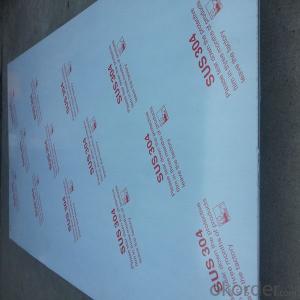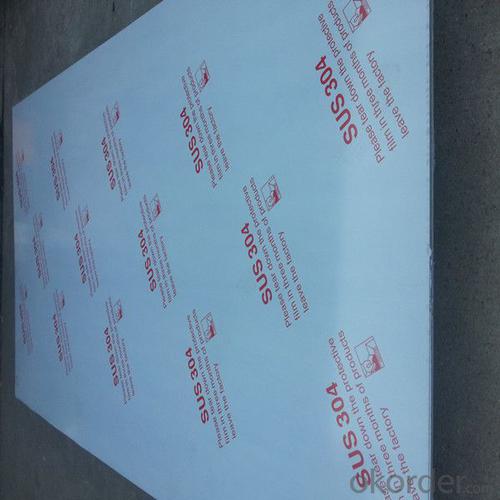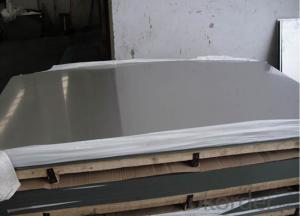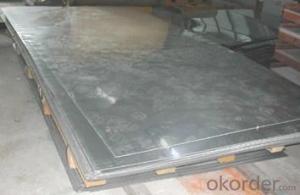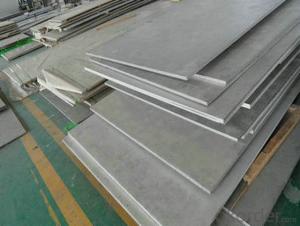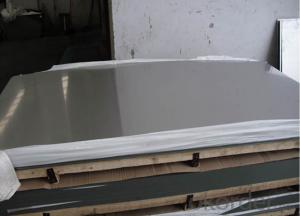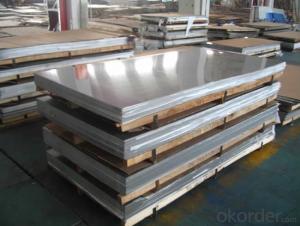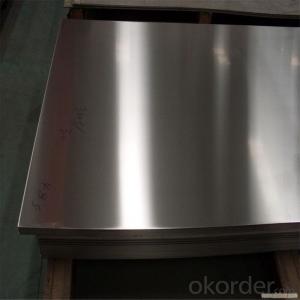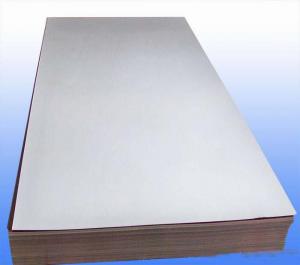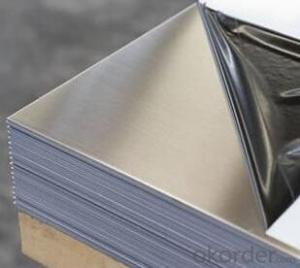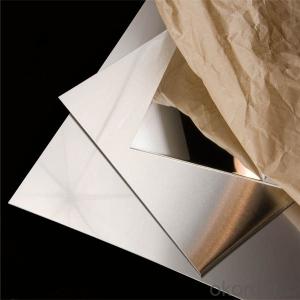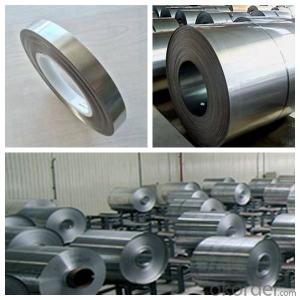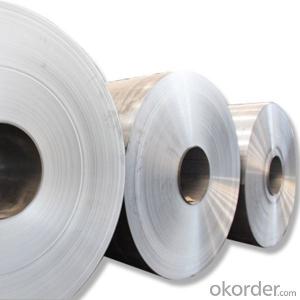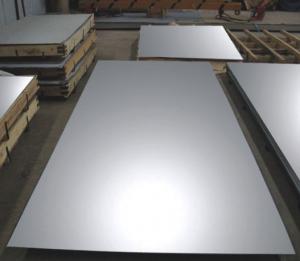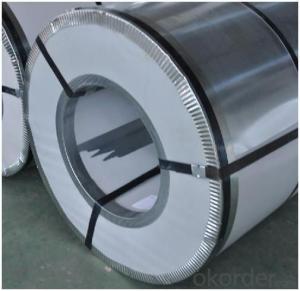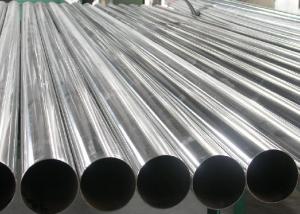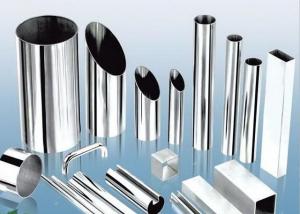304 Stainless Steel Sheet Brushed Surface with High Quality
- Loading Port:
- Shanghai
- Payment Terms:
- TT OR LC
- Min Order Qty:
- 3 m.t.
- Supply Capability:
- 40000 m.t./month
OKorder Service Pledge
OKorder Financial Service
You Might Also Like
Specification
304 stainless steel sheet brushed surface with high quality.
Product Description
Specification of 304 stainless steel sheet brushed surface
1. Material: 300series
2. Standard: JIS, AISI, ASTM, GB, DIN, EN
3. Thickness: 0.3-100mm or as customer’s requirement
4. Width: 1500-2200mm or as customer’s requirement
5. Length: 1000-6000mm or as customer’s requirement
6. Surface: 2B, BA, No.1, etc
7. Technical processing: Hot Rolled/Cold Rolled
8. Decoration:
Mirror, No.4, HL NSP, Bead Blast, Vibration,
HL Gold, Mirror Gold, Vibration Gold NSP,
No4 Copper NSP, Mirror Copper, Bead Copper,
HL Brass, Mirror Brass, Bead Brass,
HL Black, Mirror Black, Bead Black NSP,
HL Bronz, Mirror Bronze, Vibration Bronze,
Mirror Etched, HL Etched Copper, Mirror Black Etched, Mirror Etched Gold.
Surface finish of 304 stainless steel sheet brushed surface
2B,BA,HL,SB,BK,NO.1,NO.2,NO.4,NO.8,Polish,PVC,Brush,Mirror,Pickled,Annealed etc.
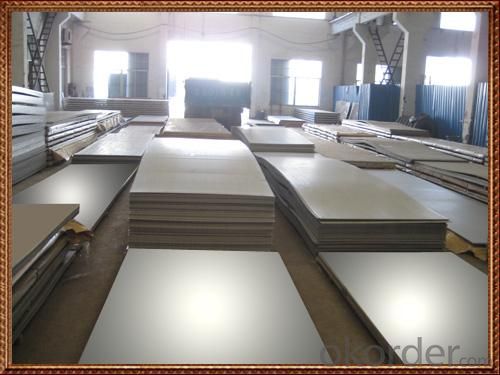
Mechanical property of 304 stainless steel sheet brushed surface
| Tensile Strength | σb (MPa)≥520 |
| Offset Yield Strength | σ0.2 (MPa)≥205 |
| Elongation | δ5 (%)≥40 |
| Reduction of Area | ψ (%)≥60 |
| Hardness | ≤187HB;≤90HRB;≤200HV |
| Density(20℃,g/cm3) | 7.93 |
| Melting Point(℃) | 1398~1454 |
| Specific Heat Capacity(0~100℃,KJ·kg-1K-1) | 0.5 |
| Thermal Conductivity(W·m-1·K-1) | (100℃)16.3,(500℃)21.5 |
| Coefficient of Linear Expansion(10-6·K-1) | (0~100℃)17.2,(0~500℃)18.4 |
| Electrical Resistivity(20℃,10-6Ω·m) | 0.73 |
| Longitudinal Modulus of Elasticity(20℃,KN/mm2) | 193 |
Chemical composition of 304 stainless steel sheet brushed surface
| 304 | C | Mn | P | S | Si | Cr | Ni |
| % | ≤0.08 | ≤2.00 | ≤0.045 | ≤0.030 | ≤1.00 | 17.5–20.0 | 8.0-11 |
Maintenance of 304 stainless steel sheet brushed surface
(1) Regular cleaning and maintenance
(2) Pay attention to prevent the occurrence of the phenomenon of surface scratches
(3) Use soap, weak detergent or warm water to remove surface dust, dirt
(4) In addition to the surface of the binder with alcohol or an organic solvent (ether, benzene)
(5) Use neutral detergent or ammonia solution in addition to surface oil
(6) With 10% nitric acid or abrasive detergent in addition to the surface of the embroider caused by the dirt.
Packaging & Shipping
Packaging way of stainless steel: Original packaging according to your needs. Standard export sea-worthy wooden packing.
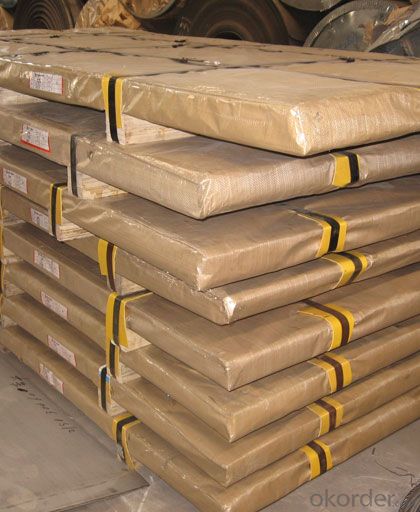
Our Services
1.All product are made of high-quality stainless steel sheet;
2.We have good service & short delivery time;
3.We have professional export team;
4.We can provide sample for your evaluation;
5.We can provide Mill test certificate;
6.Your enquiry will get quickly and efficient response.
Why do you choose us?
1)Our products are high quality and best price.
2)We have experience in this line for many years.
3)We have professional team and the factory.
4)It's very important for a company to be honest in the process of trading and so do we.
5)Our products are exported to countries around the world.
- Q: How are stainless steel sheets installed?
- Stainless steel sheets are typically installed using a few different methods, depending on the specific application and requirements. Here are some common installation methods for stainless steel sheets: 1. Adhesive: One of the simplest and most common methods is using an adhesive to bond the stainless steel sheet to the desired surface. An adhesive specifically designed for stainless steel is applied to the back of the sheet, which is then pressed firmly onto the surface. This method works well for flat or slightly curved surfaces and provides a clean and seamless installation. 2. Mechanical fasteners: For applications where additional strength and stability are required, stainless steel sheets can be installed using mechanical fasteners such as screws, bolts, or rivets. These fasteners are drilled or screwed through the sheet and into the surface to secure it in place. This method is commonly used for installations that need to withstand external forces or for attaching stainless steel sheets to structural components. 3. Welding: In some cases, particularly for large or complex installations, welding may be used to connect stainless steel sheets together or to other metal structures. Welding creates a strong and permanent bond between the sheets, ensuring a secure installation. However, this method requires skilled professionals and specialized equipment to ensure proper welding techniques and prevent damage to the stainless steel. 4. Magnetic attachment: Some stainless steel sheets are designed with a magnetic backing, allowing them to be easily attached to magnetic surfaces. This method is quick and convenient, as the sheets can be easily repositioned or removed if needed. However, it is important to ensure that the magnetic surface is clean and free from debris that could affect the adhesion. Before installing stainless steel sheets, it is crucial to properly prepare the surface by cleaning it thoroughly and removing any dirt, dust, or grease. This will help ensure a secure and long-lasting installation. Additionally, following the manufacturer's instructions and guidelines for the specific stainless steel sheet being installed is essential to achieve the best results.
- Q: What are the benefits of using perforated stainless steel sheets in acoustics?
- When it comes to acoustics, there are several advantages to using perforated stainless steel sheets. Firstly, they have excellent sound absorption properties. The evenly distributed perforations in the sheets help to scatter sound waves, reducing their energy and preventing them from bouncing back into the room. This reduces echo and reverberation, creating a more comfortable and clear acoustic environment. In addition, these sheets can be customized to meet specific acoustic requirements. The size, shape, and pattern of the perforations can be adjusted to achieve different levels of sound absorption. This allows for precise control over the acoustics of a space, making it suitable for various applications such as concert halls, recording studios, theaters, or office spaces. Moreover, perforated stainless steel sheets are highly durable and long-lasting. They are resistant to corrosion, making them capable of withstanding harsh environments without deteriorating over time. This makes them suitable for both indoor and outdoor use, ensuring consistent acoustic performance for many years. Furthermore, these sheets offer an aesthetic appeal. The perforations can be designed in different patterns and sizes, providing a visually pleasing and modern look. This makes them a popular choice for architectural and design applications, where both acoustics and aesthetics are important. In conclusion, perforated stainless steel sheets offer excellent sound absorption, customization options, durability, and an attractive appearance. These qualities make them a versatile and effective solution for improving the acoustic performance of various spaces.
- Q: Can stainless steel sheets be used for flooring?
- Yes, stainless steel sheets can be used for flooring. Stainless steel is a durable and corrosion-resistant material that can withstand heavy foot traffic and provide a sleek and modern look to the flooring.
- Q: What are the cost considerations when purchasing stainless steel sheets?
- The cost considerations when purchasing stainless steel sheets include the grade and quality of the stainless steel, the size and thickness of the sheets, any additional finishes or coatings, and the quantity being purchased. Additionally, factors such as transportation and delivery costs, as well as any applicable taxes or import duties, should also be taken into account.
- Q: What are the standard sizes and thicknesses of stainless steel sheets?
- The standard sizes of stainless steel sheets range from 4 feet by 8 feet to 5 feet by 10 feet. The standard thicknesses vary from 0.4mm to 6mm, depending on the specific application and requirements.
- Q: Can stainless steel sheets be used for wall paneling?
- Yes, stainless steel sheets can be used for wall paneling. Stainless steel is a versatile material that is known for its durability, resistance to corrosion, and aesthetic appeal. It is commonly used in various applications, including wall paneling in both residential and commercial settings. Stainless steel sheets can be easily installed as wall panels, providing a modern and sleek look to the space. Additionally, stainless steel is easy to clean and maintain, making it a practical choice for wall paneling in areas that require regular cleaning, such as kitchens and bathrooms. Overall, stainless steel sheets are a great option for wall paneling due to their durability, aesthetic appeal, and ease of maintenance.
- Q: What are the bending limits of stainless steel sheets?
- The bending limits of stainless steel sheets depend on various factors such as the thickness, grade, and temper of the material. However, generally speaking, stainless steel sheets can be bent to a certain degree without causing permanent deformation or cracking. It is important to consult specific bending charts or guidelines provided by manufacturers to determine the precise bending limits for a particular stainless steel sheet.
- Q: What about black titanium stainless steel?
- It is not easy to strip the black of the board for the purpose of etching the logo. There is hardly a chemical that can pass black. The so-called qualified fade, that is, after fading black, to ensure that the bottom of the mirror stainless steel. Without this standard, a strong acid or ferric chloride would corrode, but the surface black would have been roughened and not shiny, which would have been unsuccessful and less useful.
- Q: How do you prevent scratches or dents on stainless steel sheets?
- There are several measures that can be taken to avoid scratches or dents on stainless steel sheets: 1. Exercise caution when handling: Take care not to drop or drag stainless steel sheets against rough surfaces. It is advisable to wear gloves or protective gear to minimize the risk of scratches caused by sharp objects or tools. 2. Opt for gentle cleaning materials: To prevent scratches when cleaning, use soft cloths or non-abrasive sponges. Avoid steel wool or harsh cleaning agents that can harm the surface. Also, make sure to wipe in the direction of the grain to preserve the stainless steel's appearance. 3. Apply protective films or sheets: Adding a protective film or sheet to the stainless steel surface can provide an extra layer of defense against scratches or dents. These films are typically adhesive and can be easily removed once the stainless steel sheets are installed. 4. Store correctly: Store stainless steel sheets in a clean and dry environment to prevent scratches or dents caused by contact with other objects. Avoid stacking sheets directly on top of each other without any protective barrier in between. 5. Invest in edge protectors: Stainless steel sheets are often susceptible to dents or scratches on their edges. Using edge protectors or corner guards can help prevent damage during handling, transportation, or storage. By adhering to these preventive measures, the likelihood of scratches or dents on stainless steel sheets can be significantly reduced. This will ensure their durability and preserve their flawless appearance.
- Q: Can stainless steel sheets be used for aerospace fasteners?
- Yes, stainless steel sheets can be used for aerospace fasteners. Stainless steel is a popular choice for aerospace applications due to its excellent corrosion resistance, high strength, and durability. It can withstand extreme temperatures and environments, making it suitable for use in aircraft components that are exposed to challenging conditions. Stainless steel sheets can be fabricated into various shapes and sizes to serve as fasteners such as screws, bolts, and rivets, providing a reliable and secure connection in aerospace structures. Additionally, stainless steel's non-magnetic properties are advantageous for certain aerospace applications where magnetic interference needs to be minimized. Overall, stainless steel sheets are a reliable and widely used material for aerospace fasteners.
Send your message to us
304 Stainless Steel Sheet Brushed Surface with High Quality
- Loading Port:
- Shanghai
- Payment Terms:
- TT OR LC
- Min Order Qty:
- 3 m.t.
- Supply Capability:
- 40000 m.t./month
OKorder Service Pledge
OKorder Financial Service
Similar products
Hot products
Hot Searches
Related keywords
